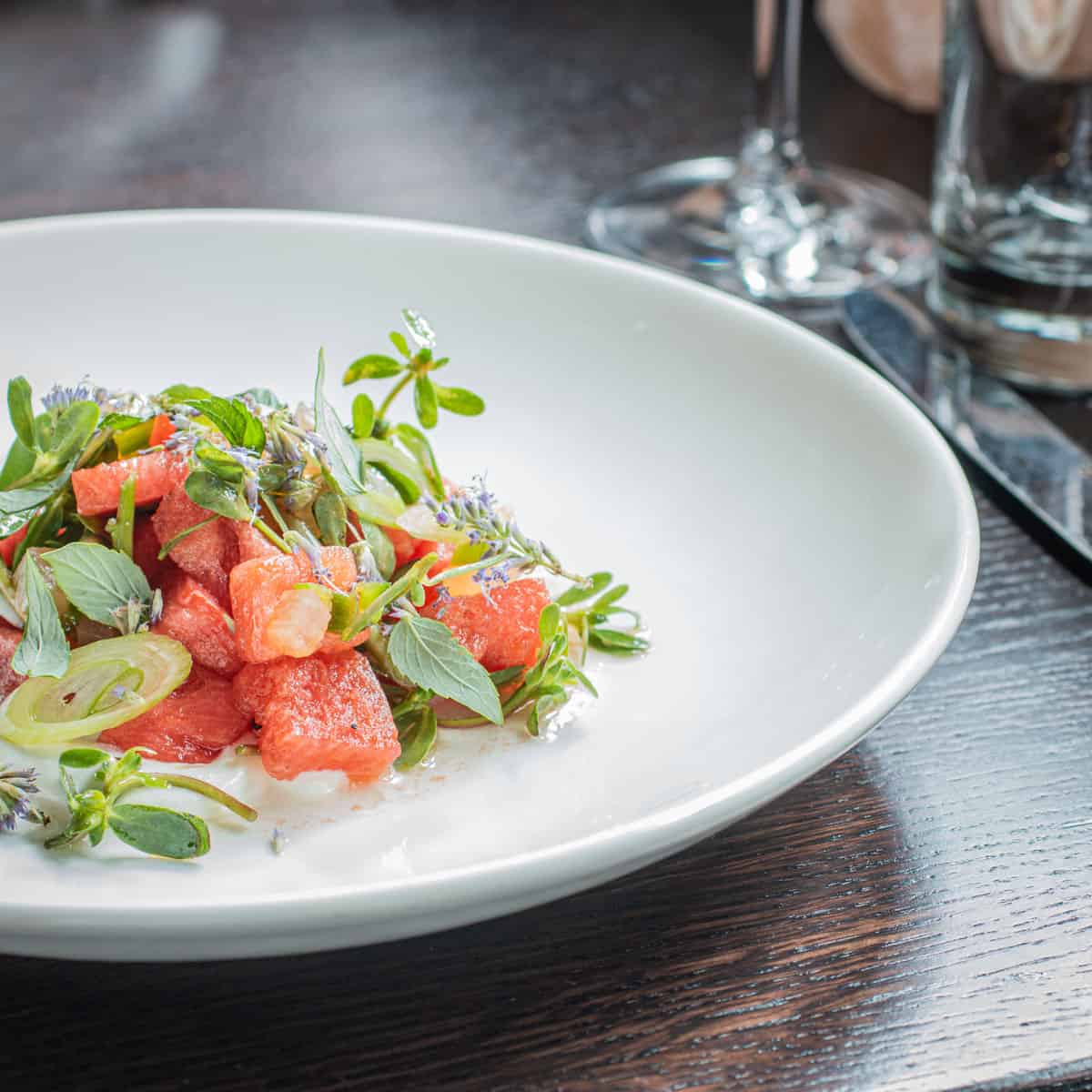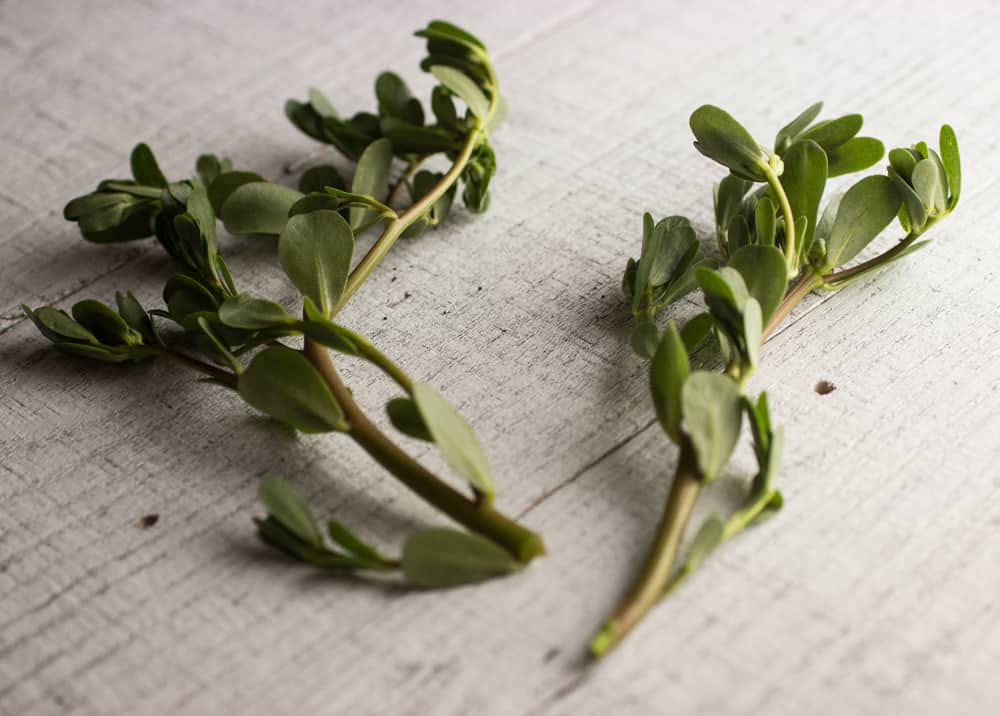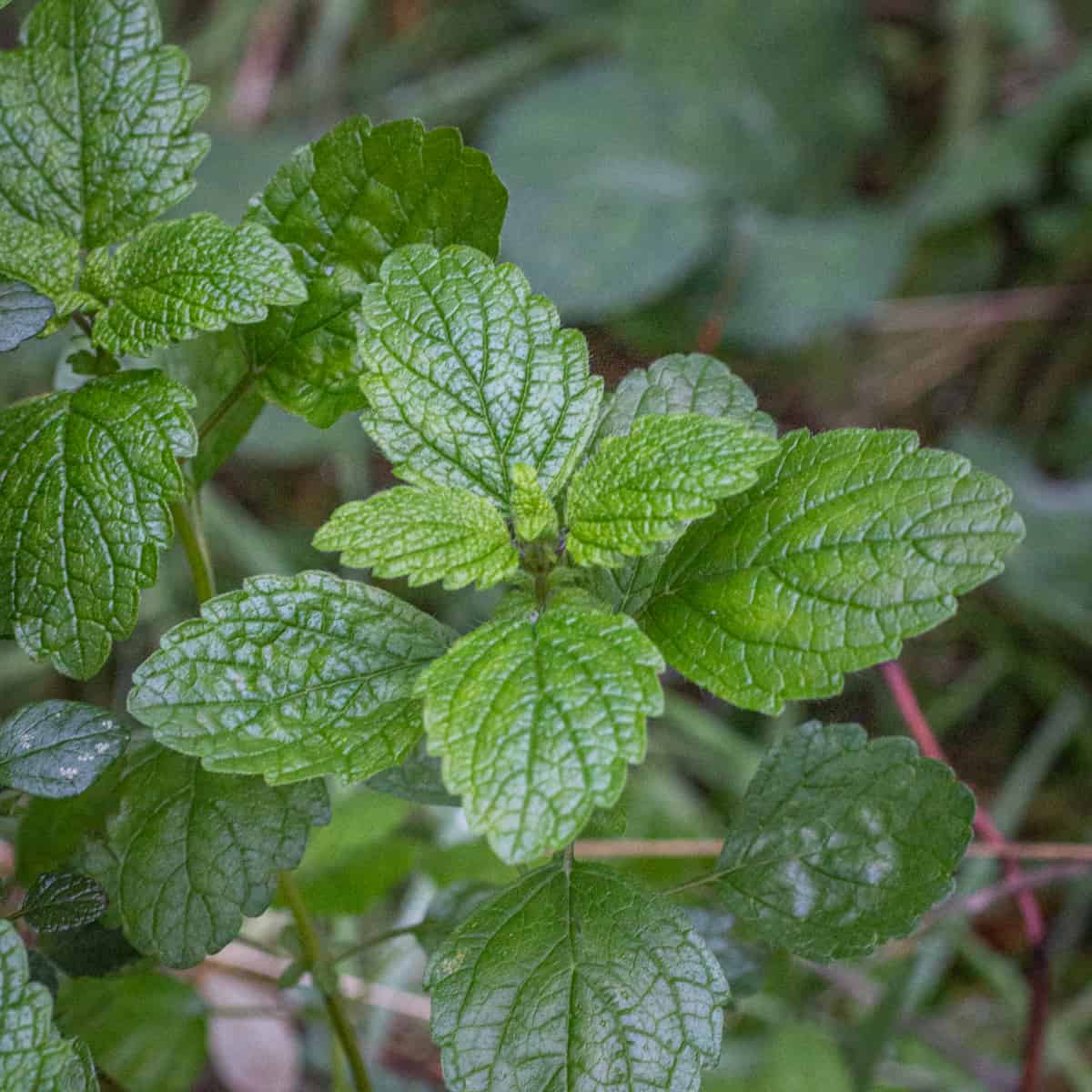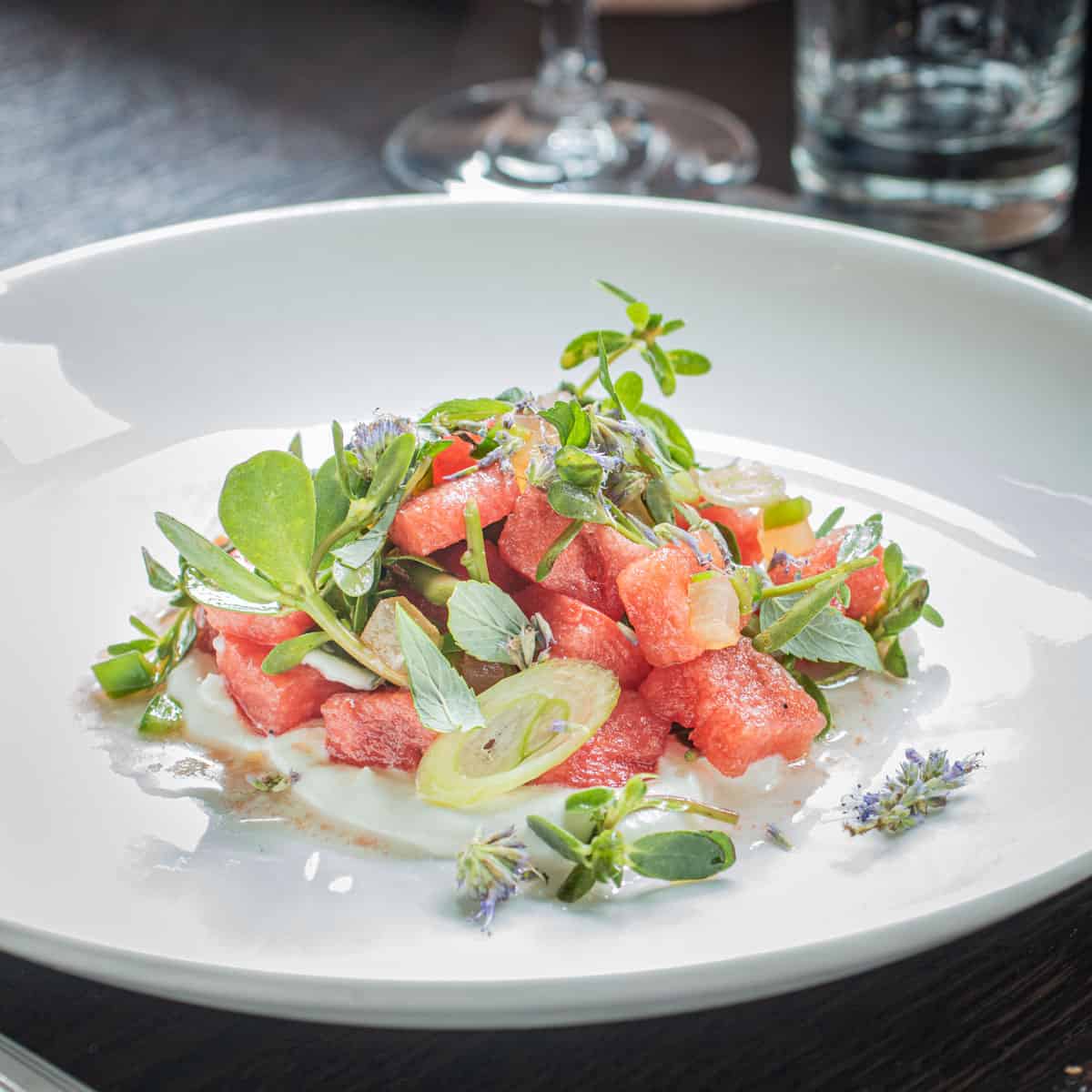Watermelon salad is on plenty of menus in the summer for good reason, it's cold, refreshing, and evocative of the season.

The Best Watermelon for Salads
All watermelons are not created equal. For the best fresh watermelon salad you want seedless watermelon purchased from a farmers market. If you can find them, yellow watermelon are good too.
But, if you can't find any of those and you still want to make the dish, just cut regular watermelon into cubes and remove all the seeds.
Don't make it too sweet
While I was in San Francisco I had one that was just chunks of watermelon with some crumbled feta cheese and a few pieces of mint. It was nothing to write home about.
The danger of watermelon salad is when it becomes too sweet. To rein in the sugar, you need some savory elements to help balance it.
Cheese and Vegetables
A little cheese is good, and there's some goat cheese in my salad that's spread on the bottom of the plate. But, a green vegetable component is great too. That's where the verdolagas or purslane comes in, which is a great edible weed you'll see in gardens in the summer.
If you're not familiar with this delicious edible weed, check out my post Verdolagas / Purslane: Harvesting and Cooking.

Purslane adds a fresh crunch that's perfect alongside the watermelon. If you cant find any at your farmers market, check your garden as it's a very common weed. If you can't find purslane, you can add a little sliced fennel instead.

Basil or Other Herbs
I may make this with a number of different herbs depending on what's available. Thai basil is good, lemon basil is even better. If I have mint I may add that too. Lemon balm is also a really good choice.

Watermelon Basil Salad with Goat Cheese
Equipment
- 1 large salad bowl
Ingredients
- 12 ounces seedless watermelon sliced into 1 inch bite sized cubes
- 1 tablespoon jalapeno diced ¼ inch (add a few seeds if you like it spicy)
- 2 oz sliced scallions roughly ¼ cup. *See note.
- fresh basil leaves to taste
- Kosher salt and fresh ground black pepper to taste
- 1 cup fresh purslane or sliced fennel cut into 1 inch pieces
- Lemon olive oil (optional) you can substitute extra virgin olive oil
- 2 tablespoons pickled watermelon rind (optional)
- Fresh lime juice to taste
- 4 oz fresh chevre
- 3 Tablespoons heavy cream
Instructions
- Mash the goat cheese with the cream in a small bowl until smooth. Season with a pinch of salt and pepper.
- In the bottom of four chilled salad bowls or coupes, spoon two tablespoons of the cheese, spreading it out to make a bed for the watermelon.
- In a large salad bowl, combine the watermelon, purslane and jalapeno and scallion. Season the mixture to taste with salt, vinegar, and lemon oil, then carefully mound on top of the cheese.
- Tear the basil leaves into bite sized pieces and add them to the salad. Toss to combine, double check the seasoning for salt, pepper and lime. Adjust the seasoning until it tastes good to you, then it's ready to serve. Spoon the salad on top of the cheese on each plate.


Leave a Reply